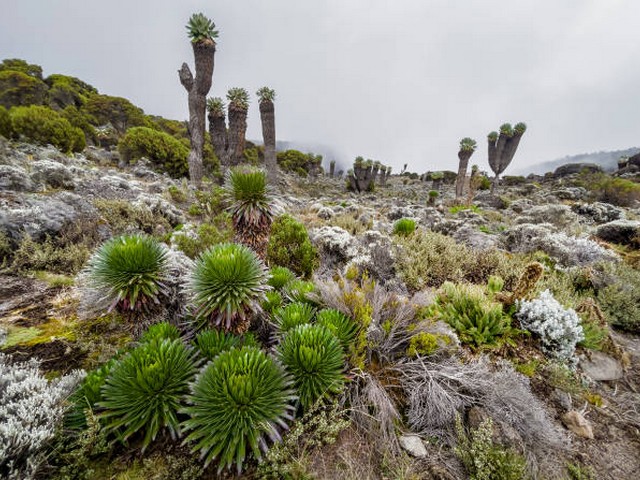Kilimanjaro Trekking Tips for Beginners: Your Ultimate Guide to Conquering the Roof of Africa
Welcome to the adventure of a lifetime! Are you dreaming of standing atop the highest peak in Africa, surrounded by breathtaking vistas and the clouds beneath your feet? If so, you’re in the right place. At the Kilimanjaro Centre for Trekking and Ecotourism (KCTE), we specialize in turning dreams into reality. Climbing Mount Kilimanjaro is an exhilarating experience that attracts thousands of trekkers each year, and with the right preparation, you can be one of the successful few to witness its majestic beauty. This blog post is your essential guide filled with Kilimanjaro trekking tips tailored specifically for beginners. So, lace up your boots, and let’s embark on this incredible journey together!
Why Trek Kilimanjaro?
Mount Kilimanjaro is not just a mountain; it’s a beacon of achievement, nature’s skyscraper, and a rite of passage for many adventurers. Conquering this 5,895-meter giant offers not only breathtaking views but also the chance to cross a personal milestone. The diverse ecosystems, ranging from lush rainforests to arid alpine deserts, make each step a discovery.
Choosing the Right Route
1. Marangu: The Tourist Route
Ideal for beginners, the Marangu route offers comfortable sleeping huts and a relatively gentle gradient. It’s known as the "Coca-Cola" route and is perfect for those who prefer a more defined path.
2. Machame: The Whiskey Route
For those seeking a bit more adventure, the Machame route is more challenging but rewards trekkers with stunning scenic views and a higher success rate due to better acclimatization opportunities.
3. Lemosho: The Scenic Route
Starting from the lush rainforests at Lemosho, this route offers a serene trekking experience, with fewer crowds and a higher chance of reaching the summit due to its longer duration, which aids acclimatization.
Each route has its charm and challenges, and at KCTE, we’re here to help you choose the best path for your adventure.
Preparing for Your Trek
Physical Preparation
Kilimanjaro is not technically demanding, but it does require a good level of fitness. Begin training at least three months in advance, focusing on cardiovascular fitness, strength training, and hiking. Regularly hiking hills or stairs can be particularly beneficial.
Gear Up
Investing in the right gear is crucial. Essential items include:
- A sturdy pair of hiking boots
- Thermal layers for the summit night
- A comfortable backpack
- A sleeping bag suitable for low temperatures
- Walking poles
- Headlamps for those early morning or late-night treks
Health and Safety
Consult with a healthcare provider before embarking on your journey, especially regarding vaccinations and altitude sickness medication. Hydration is key to combating altitude sickness, so drink plenty of water throughout your trek.
On the Mountain: Tips to Reach the Summit
Acclimatize Properly
Altitude sickness is a real concern on Kilimanjaro. To mitigate this, take your time to acclimatize. Consider a route that allows for extra acclimatization days. Remember, “pole pole” (slowly, slowly) is the mantra on the mountain.
Stay Nourished and Hydrated
Your body will be burning a lot of calories. Eat well and drink water regularly to keep your energy levels up. KCTE provides balanced meals tailored to keep you fueled throughout your trek.
Respect the Mountain
Keep the trails clean and respect the wildlife. Kilimanjaro is not only a natural wonder but also a home to many species. Preserving its beauty is crucial.
After the Descent: Reflect and Rejoice!
Reaching the summit is exhilarating, but the journey down is the time to reflect on your achievement. Once you’re back, celebrate your success with fellow trekkers and take the time to relax and recover.
Why Book with KCTE?
At the Kilimanjaro Centre for Trekking and Ecotourism, we pride ourselves on providing expert-guided tours that prioritize safety, environmental conservation, and community benefits. Our experienced guides and porters are trained to ensure you have a safe, memorable, and fulfilling experience. Booking with KCTE means you’re not just going on a trek; you’re embarking on a well-supported expedition with a trusted partner.
FAQs
What is the best time to climb Kilimanjaro?
The best times to climb Kilimanjaro are during the dry seasons: January to mid-March and June to October. These months offer the clearest skies and safest trekking conditions.
How long does it take to climb Kilimanjaro?
It typically takes about 5 to 9 days depending on the route. We recommend routes that allow for ample acclimatization time, which can increase your chances of reaching the summit.
Do I need a visa to enter Tanzania?
Most travelers will require a visa to enter Tanzania. Visas can be obtained on arrival at the airport or beforehand through your local Tanzanian embassy.
Can I climb Kilimanjaro without any prior trekking experience?
Yes, many beginners successfully summit Kilimanjaro each year. However, adequate preparation in terms of fitness and acclimatization should not be underestimated.
Ready to Conquer the Roof of Africa?
Embarking on a Kilimanjaro trek is an unforgettable adventure, and with these tips, you’re better prepared to face the challenge. Remember, every step you take is a step towards achieving something extraordinary. If you’re ready to turn your dreams into reality, book your Kilimanjaro climbing adventure with Kilimanjaro Centre for Trekking and Ecotourism (KCTE) today. Let us guide you to the top!
Climb high, dream big, and reach the summit with KCTE. See you on the mountain!




